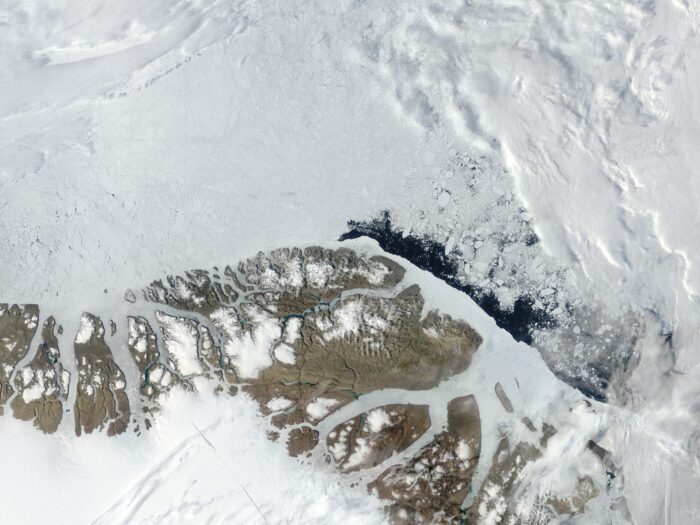DNA is a magical thing. As you may know (maybe even from reading articles on this site!), these sequences of complex molecules are the blueprints for all living things.
All living things have their own DNA—from the tiniest bacteria to the largest animal. And what's even more interesting? We leave traces of our DNA everywhere we go.
For example, if you walk into a room and touch a table, you'll leave behind a trace of DNA. It's like a tiny molecular footprint!
This is why DNA is such a remarkable tool for discovering who or what was in a particular place long after they have gone. We hear about it a lot in terms of police investigations, where it can be used to prove that someone was at a scene of a crime. But paleontologists have been using it to recreate another type of scene.
Ancient habitats.
In fact, a recent study has used a sample of DNA taken from two-million-year-old permafrost in Greenland to rebuild a picture of an astonishing prehistoric ecosystem, called Kap Kobenhavn. (Today, the area is known as Peary Land.)
This slice of genetic material revealed traces of a wide array of life, including species of: reindeer and caribou, lemmings, geese, hares, ants, fleas, coral, horseshoe crabs, birch and poplar tress, and, maybe coolest of all, mastodons!
Half life loss
It seems almost like science fiction that we can look that deep into the past using DNA. And for a long time, it was.
You see, in most situations, DNA degrades (or loses its characteristics) relatively quickly. For example, DNA left on an open surface like a table won't last much more than a few months before it evaporates and is gone. Storing it at colder temperatures and in sealed containers can increase the length of time that DNA lasts significantly. But even then, there's an upper limit to how long it will stick around.
One of the best natural ways for DNA to be preserved is for it to be sealed within the bones or teeth of a living thing. Thanks to research on the bones of extinct moa birds, studies have shown that DNA has a half-life of about 521 years.
This means that after 521 years, half of the DNA sample (or 50 percent) will have degraded. Then in the 521 years after that, another half of that earlier half (or 25 percent more) will be gone.
This process keeps going until there is essentially nothing useable left behind.
Extending time

Peary Land, located on north Greenland, is high above the Arctic Circle. The permafrost here preserved the DNA for two million years. (Wikimedia Commons)
Based on these studies, scientists originally estimated that even under the best conditions, ancient DNA couldn't survive much past one million years. But the samples from Kap Kobenhavn blew that estimate out of the water, essentially doubling how long the DNA was able to survive.
Though the DNA was significantly degraded, the time-stopping deep freeze of the Greenland permafrost (frozen soil) was able to keep enough of it intact for modern science to build a detailed picture of the past. It also helps that DNA technology has advanced to the point where researchers don't need complete samples to rebuild ancient genetic code. They can compare sequences to currently living species of animals and plants to make a solid estimate of what they're looking at.
And based on their findings, this part of the world was remarkably warm and lush two million years ago. What is now a fairly barren tundra desert was once full of trees, wetlands, insects, birds, and mammals. Finding mastodons was especially shocking. Scientists didn't think the elephant relatives has ever made it to the remote Arctic island. Now they know that mastodons must have found a way across the water to live there, perhaps thanks to an ice bridge in the coldest months?
Fascinating stuff!
 An artist's impression of what Kap Kobenhavn looked like two million years ago. (Beth Zaiken)
An artist's impression of what Kap Kobenhavn looked like two million years ago. (Beth Zaiken)









